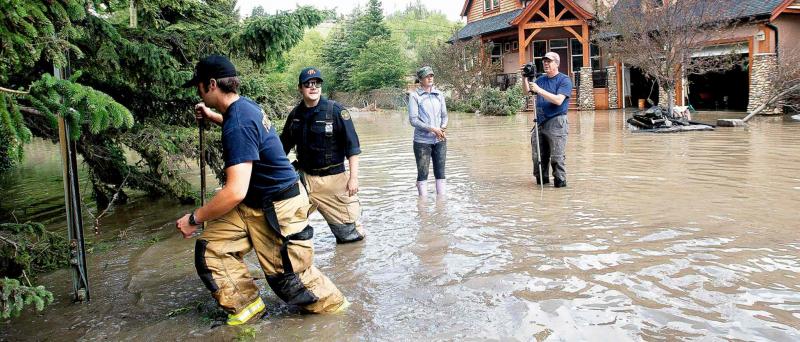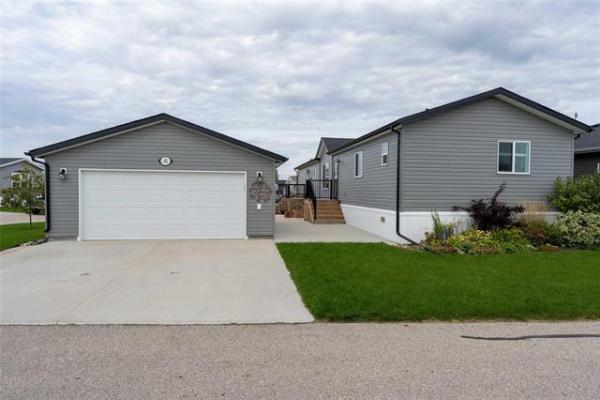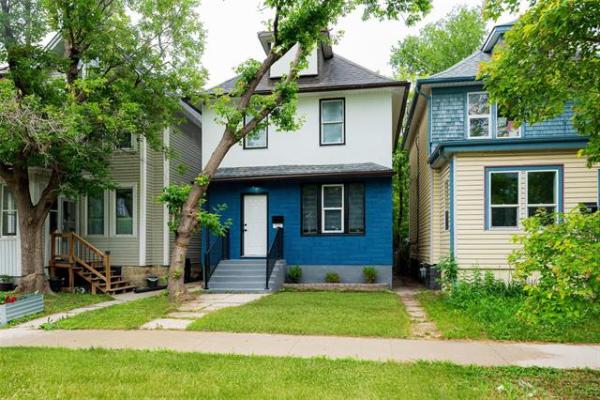From intense rain to droughts, extreme weather is on the increase, say climatologists and insurance companies alike. Whether you believe it's rooted in human-induced climate change or not, you need to protect your home from that weather.
Before learning how, a little background: Water damage now outranks fire as the leader in home-insurance claims, according to the Insurance Bureau of Canada. One reason: Sewer lines back up into basements because municipal infrastructure can't handle intense rainstorms.
"We only notice the aging infrastructure when it's stressed," says the bureau's Pete Karageoros. And that's occurring more frequently, he says. "Severe storms that used to happen once in 50 years are now happening once in 20."
With modern basements boasting everything from home theatres to fitness rooms, damage can be serious. The high winds typical of extreme weather also wreak havoc. They can tear off shingles, overturn backyard structures and topple trees onto houses.
You may have insurance coverage for sewer backups (check your policy) but not for "overland" flooding. That's the kind that occurs when water pours through basement windows from swollen watercourses, as happened in Calgary with disastrous results this past summer. Insurance companies don't provide overland flooding coverage in Canada, according to the IBC.
What's more, increasing water-damage claims from extreme weather and aging infrastructure are affecting the cost of providing home insurance, according to TD Insurance. The company is paying out an estimated $125 million on claims for evacuation as well as home and automobile damage from the Alberta and Toronto floods of 2013, the company says. Damage from sewer backups was extensive in both floods. How much home insurance rates could increase remains to be seen.
"It's time for homeowners to smarten up and do due diligence," says Blair Feltmate, a teacher at the University of Waterloo and chairman of the Climate Change Adaptation Project (Canada), which explores strategies for adapting to climate change.
Diligence includes, for example, installing a backwater valve to prevent sewer backups through a basement drain. It can cost several thousand dollars as a retrofit, but that's cheaper than the $15,000 to $20,000 the climate change project says it typically costs to repair a flooded basement. Also, raising valuable items, water heaters and mechanical systems off the basement floor will minimize flood damage.
Still in the basement, Steve Barkhouse, owner of Ottawa's Amsted Design-Build and its restoration subsidiary Restore-All, says water-absorbing insulation should be no closer than one foot (0.3 metres) from the floor. As well, use moisture-resistant cement board rather than drywall to cover walls.
Outside, keep eavestroughs and drains clear and use downpipe extensions to draw water away from the house. Check window and door caulking annually. Cover window wells.
Does the ground slope away from your home for drainage? With a new house, the backfill around the foundation can sink in the first few years, says John Herbert, executive director of the Greater Ottawa Home Builders Association.
Finally, limit or remove hard surfaces such as asphalt to allow soil absorption of excess rain.
To minimize wind damage, consider replacing your roof if it's more than 15 years old, says Don Mann of Ottawa's Sanderson Roofing. Modern fibreglass shingles are more wind-resistant than older organic paper ones.
Barkhouse blames poor construction for the increasing damage he's seen from extreme weather. "When we get strong winds, we see siding and shingles all over the place because cheap materials were used."
He recommends good windows and says brick and stone stand up best to hail and wind. Worth noting: Wind and hail damage is generally covered by home insurance, but not damage from soil subsidence.
If you are building a gazebo or open porch, use hurricane ties to secure the roof -- the extra cost is minimal.
-- Postmedia Network Inc. 2014




